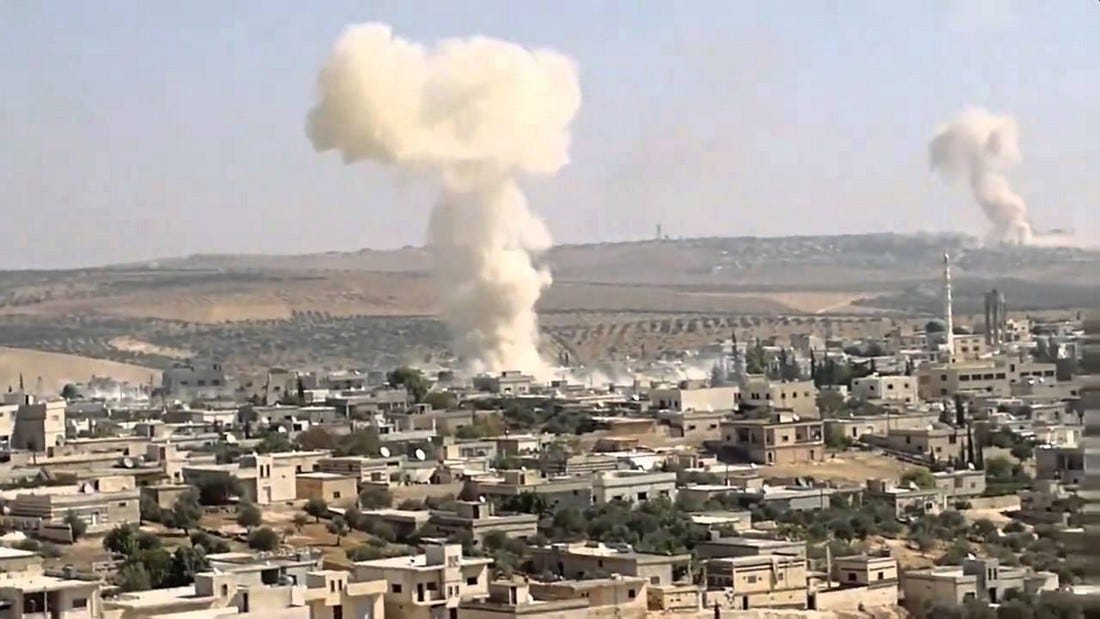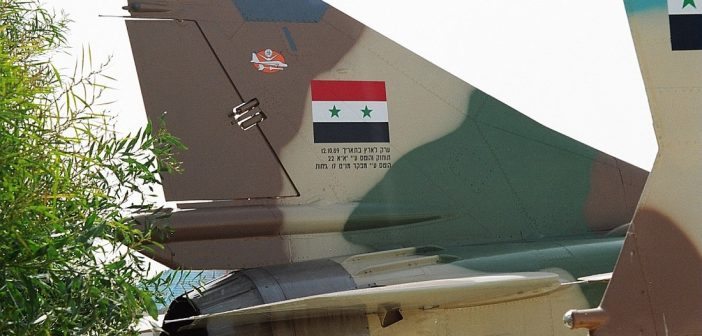After five years of war, there’s still life in the battered air arm
by TOM COOPER
Declared “inoperational” by most of foreign observers already at the start of Syrian uprising in 2011, the Syrian Arab Air Force not only remains operational, but — regardless of how badly impacted by attrition over the years — is showing surprising signs of vitality.
The logical question is therefore — what’s left of the SyAAF?
From the standpoint of the “silent service” — as the SyAAF used to be known within what was once the Syrian military — the civil war in Syria began slowly. For most of 2011 and 2012, all of Sunni officers and other ranks were grounded and de facto locked inside their bases.
The large part of the Syrian fleet of helicopters and combat aircraft — the total was estimated at over 500 as of 2010 — was grounded, too. Types like the Mikoyan i Gurevich MiG-23MS and MiG-25P/PDS/PU/RB and Sukhoi Su-20 had been withdrawn from service in the 2000s. Nearly 50 percent of the remaining Mil Mi-8/17s, MiG-21MF/bis/UMs, MiG-23MF/MLs and Su-22s were in need of major overhaul, if not an outright replacement.
During that period only a relatively few Alawites flew helicopters that the regime used to transport reinforcements and supplies to garrisons cut off by insurgents.
The insurgent advance on Aleppo, Syria’s largest city, in late July 2012 forced the air force into all-out action. For much of the second half of 2012 and through most of 2013, the SyAAF flew and fought in full swing. Its fighter-bombers were regularly striking targets from Salma near the Turkish border to Dayr Az Zawr in eastern Syria and from Aleppo to Dera’a.
Acting as the regime’s “fire brigade,” the SyAAF even pressed interceptor types such as the MiG-23MF, MiG-23ML and MiG-29 into the ground-attack role, altogether flying up to 230 sorties a day.
Most of the activity was recorded over Rif Dimashq and Homs governorates, where nearly 2,000 air strikes are known to have been flown between November 2012 and April 2013, alone — primarily by Mikoyan i Gurevich MiG-21bis and MiG-23BNs.
Other types saw intensive action, too. Indeed, measured by the number of available examples, Syria’s fleet of just 19 Sukhoi Su-24M2s was the most heavily utilized element of the air force.
Intensive operations inevitably resulted in heavy losses. And orders issued by the Ba’ath Party headquarters in Damascus demanding pilots to intentionally target civilians in insurgent-held areas — and commanders to lead by example — caused a spate of defections.
Combined, both factors badly depleted the SyAAF’s ranks. Between July 2012 and July 2013, the SyAAF experienced the heaviest attrition during this conflict — at least 45 helicopters and 30 fighter jets were confirmed as crashed or shoot down.

Also lost were around 375 pilots and other personnel, while 36 were captured and 40 went missing in action. By early 2014, the service was left with barely 60 operational helicopters and fewer than 150 operational fighter-bombers, nearly all of which were once again in need of overhaul.
Western embargoes on the delivery of man-portable air-defense systems and the lifting of the siege of Aleppo in October 2013 eventually saved Syrian president Bashar Al Assad’s air force.
The rate of losses dramatically decreased, but the availability of a crucial maintenance facility — “The Works” at Nayrab Air Base, part of Aleppo International airport — enabled the air force to overhaul around 20 aircraft in recent years.
Furthermore, with help of Iranian financial support and advice, additional overhaul facilities stood up at a number of other bases. Using assemblies from inoperable aircraft and spares acquired from abroad, Syrians ground crews managed to assemble about two dozen fully mission-capable aircraft.

These not only replaced worn-out or lost aircraft, but also secured the survival of the SyAAF as one of less than a handful of regular military services still loyal to Al Assad’s regime.
Losses — whether through ground fire or in accidents — remain unavoidable, especially because security standards have significantly decreased in face of continuous and prolonged action.
Aircraft are often sent to a mission with only most basic systems in operational condition. Stocks of ammunition are exhausted to a level where the SyAAF has been forced to launch domestic production of improvised bombs based on obsolete Russian designs.
The latter have a poor operational record. Many fail to detonate. And some do detonate — but prematurely, destroying precious aircraft and killing or injuring ground personnel.
Finally, some of pilots have begun showing obvious signs of becoming reckless. The crew of the Su-24MK2 shot down by Israeli PAC-2 Patriot missiles on Sept. 23, 2014 failed to activate their electronic countermeasures and then flew into Israeli-controlled airspace over the Golan Heights.
Unsurprisingly, Russian military intervention in Syria starting in September 2015 was most welcome from the SyAAF’s perspective, as it somewhat lessened the Syrian force’s heavy workload.
In five years of civil war, Al Assad’s air force has suffered a confirmed loss of at least 55 aircraft and 57 helicopters shot down or crashed and another 28 helicopters and 51 aircraft written-off on the ground — notably, most of the latter were in unserviceable condition.
Included in these numbers are about a dozen of L-39s, seven MiG-23s of all variants, at least four Su-22s and four Su-24MK2s. Also included are no fewer than 10 MiG-21bis from Hama-based No. 679 Squadron. Losses within this unit forced the SyAAF to send MiG-21UM two-seat conversion trainers into combat and also to re-deploy a squadron of MiG-23ML interceptors to Hama.
Similarly, heavy utilization of MIG-29s in the ground-attack role forced the SyAAF to overhaul two MiG-25PDS and return them to “operational-like” condition. Although rarely flown, they are kept on constant alert at Tiyas Air Base.
Currently, what is left of the SyAAF is concentrated at five major air bases, each of which is a home for units usually operating fewer than a dozen of airframes.
Three squadrons are based at Hama, three at Shayrat, four at Tiyas, three at As-Seen Air Base and four at Dmeyr Air Base. A few other units and minor detachments are distributed at Kweres, Dayr Az Zawr, Marj Ruhayyl/Bley and Khelkhleh, while Almazza and Damascus International remain major helicopter- and transport aircraft hubs.


